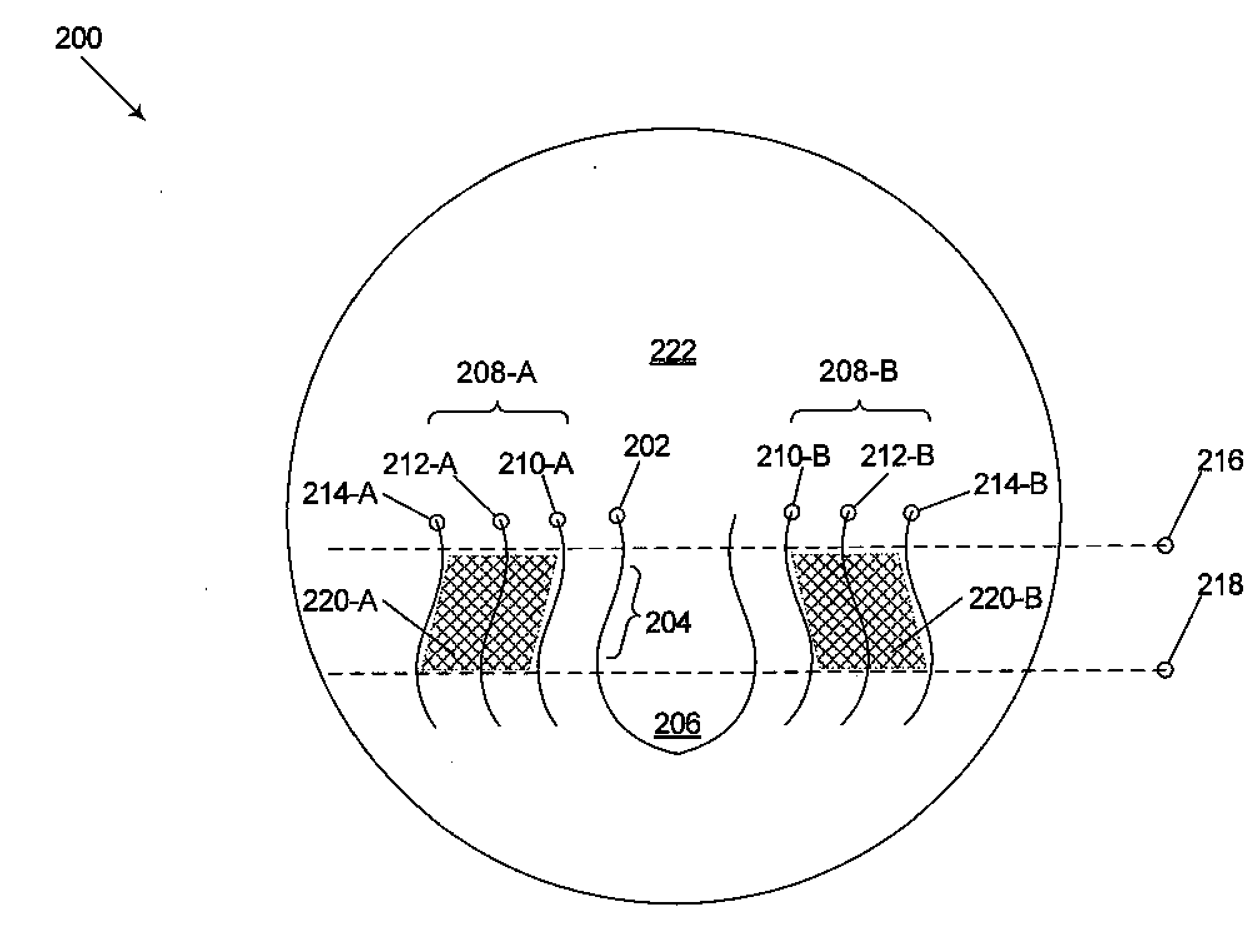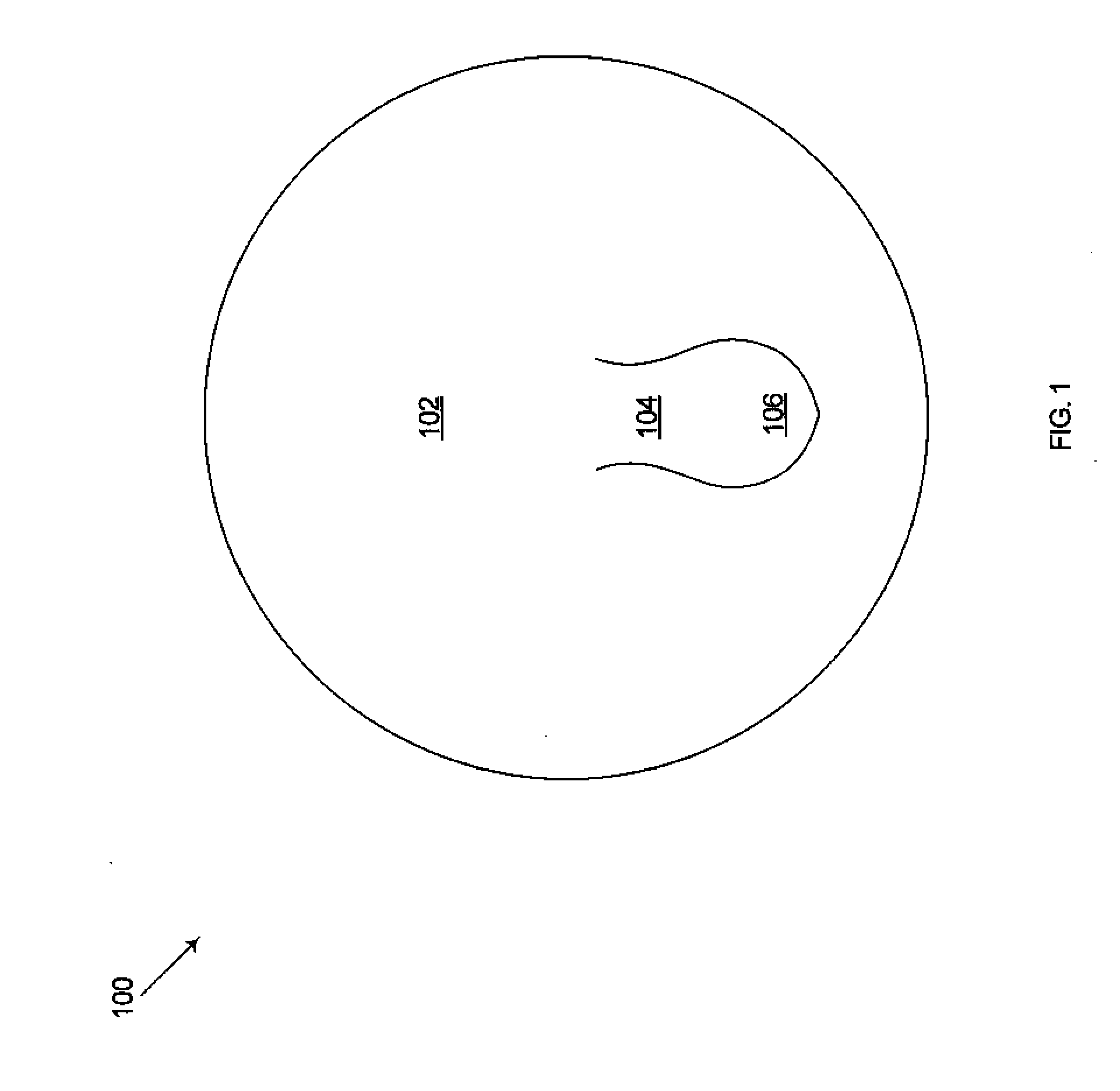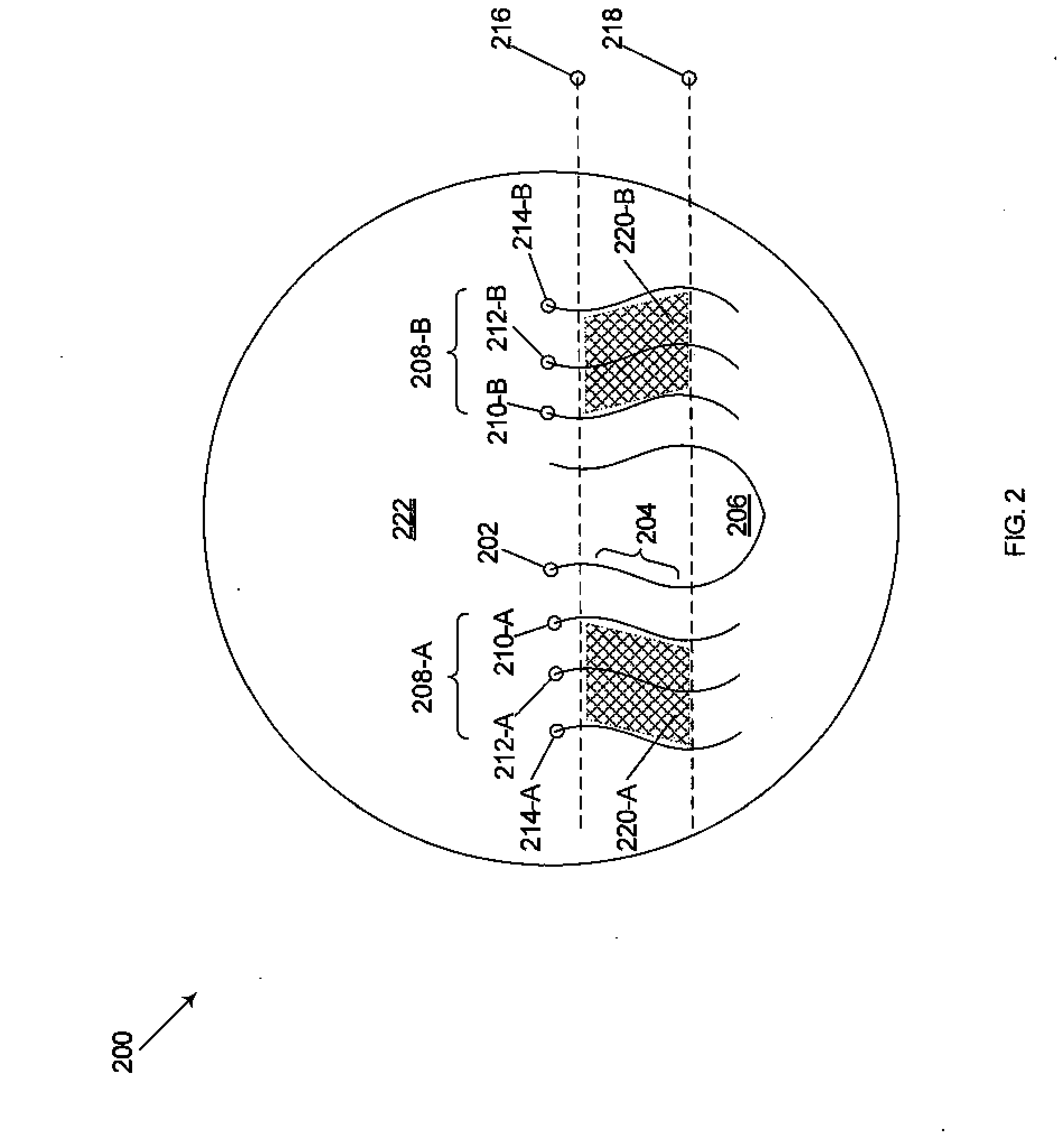Progressive addition lens design
a technology of progressive addition and lens design, applied in the field of ophthalmic lenses, can solve the problems of adversely affecting the width of the distance vision zone of the resulting pal
- Summary
- Abstract
- Description
- Claims
- Application Information
AI Technical Summary
Problems solved by technology
Method used
Image
Examples
Embodiment Construction
[0009]Aspects of the present invention provide progressive addition lenses (PALs) and techniques for designing PALs that result in improved visual performance and comfort for the wearer. PALs of the present invention can have vision zones with widths that are more in line with the actual or functional sizes used by wearers. PALs of the present invention can also introduce controlled amounts of unwanted astigmatism into one or more vision zones. By allowing vision zones to include controlled levels of astigmatism, the resulting PAL can avoid the steep build-up of astigmatism typically found in conventional PALs at the periphery of the channel and viewing zones. Further, PALs of the present invention can be designed through an iterative optimization process using a merit function that accounts for astigmatism vector orientation and not simply astigmatism magnitude as is the case with conventional PAL design. A merit function of the present invention can be a function that expresses th...
PUM
 Login to View More
Login to View More Abstract
Description
Claims
Application Information
 Login to View More
Login to View More - R&D
- Intellectual Property
- Life Sciences
- Materials
- Tech Scout
- Unparalleled Data Quality
- Higher Quality Content
- 60% Fewer Hallucinations
Browse by: Latest US Patents, China's latest patents, Technical Efficacy Thesaurus, Application Domain, Technology Topic, Popular Technical Reports.
© 2025 PatSnap. All rights reserved.Legal|Privacy policy|Modern Slavery Act Transparency Statement|Sitemap|About US| Contact US: help@patsnap.com



